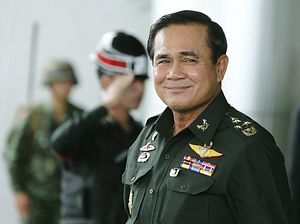Last week, a Thai defense official made headlines when he suggested that Thailand was seeking to move forward with plans to acquire new attack helicopters. Though this represents the reiteration of a previously articulated priority for Thailand’s military and few additional specifics have been disclosed, it nonetheless reinforces the fact that Bangkok continues to look for ways to make progress on this front in spite of the realities and uncertainties that remain.
Though there a range of priorities for Thailand in its country’s ongoing defense modernization, one of those has been replacing its aging fleet of combat helicopters. Thai officials have confirmed previously that the Royal Thai Army (RTA) plans to acquire new helicopters, with plans to set up a procurement committee to detail specifics of the requirement and then seeking funding from the government, and a range of options being considered along the way, including helicopters from the United States, Russia, and China.
Last week, further indications surfaced that Thailand was trying to make inroads on its attack helicopter acquisition. Major General Weerayuth Intaworn, the director of the Army Aviation Center (AAC), reiterated that the military planned to buy six more attack helicopters initially and that an army committee would travel abroad next month to examine various models offered for sale by manufacturers in the United States, France, Russia, and other countries, according to The Bangkok Post.
Weerayuth’s comments suggest continuity in terms of the ruling junta government’s determination to make progress on this priority. But he unsurprisingly did not offer much publicly on how this was being pursued in the way of specifics, saying that the budget for the purchase had not been discussed and that the helicopters would be procured gradually over a number of years. Though no doubt politically sensitive to some degree, those specifics would be important in terms of determining the feasibility of alternatives, particularly as Bangkok continues to struggle with financing its needs in spite of some modest increases in defense spending over the past few years under a junta-led government which itself is in the midst of a prolonged domestic political transition (See: “What Does Thailand’s 2019 Defense Budget Mean?”).
Weerayuth also predictably provided no concrete details publicly about the specific factors that the government would use to weigh various alternatives in front of it. With respect to helicopters, Thailand is no stranger to the idea of diverse partners, having worked with not only its treaty ally the United States but also other countries Italy, France, and Russia. So it is not surprising that various actors have been mentioned with respect to the new attack helicopter acquisition, and that we have seen those reflected in headlines over the course of the past months.
The Bangkok Post did cite an anonymous army source as saying that U.S. options were more expensive and that Thailand could be prompted to consider cheaper options such as China or Russia. But the cost consideration is not new within Thailand’s defense thinking, and while it has to some degree motivated Bangkok’s desire to further cooperation with other players such as Beijing and Moscow, it also obscures the more complicated tradeoffs that need to be made when it comes to certain capabilities that take into account other factors such as quality and interoperability.
All this is to say that while it is clear that the current junta-led government in Thailand continues to see acquiring new attack helicopters as a one key priority within the country’s defense modernization, how it will go about realizing this given the various options and the other military, economic, and political considerations before it remains far less clear despite the occasional headlines on this front.
































